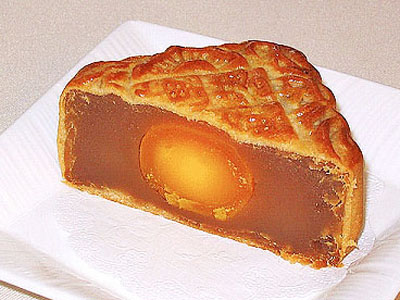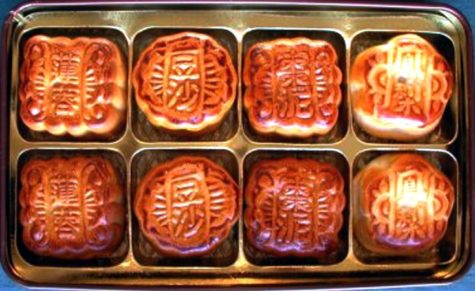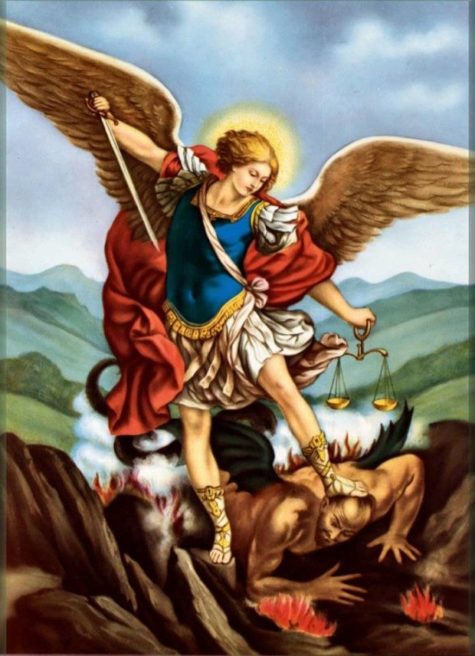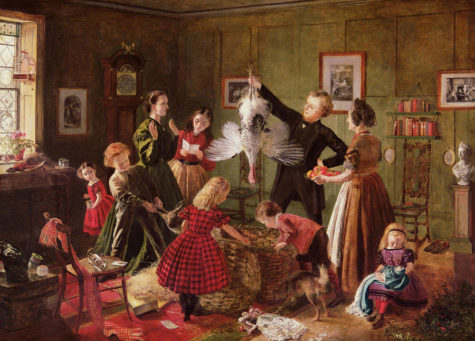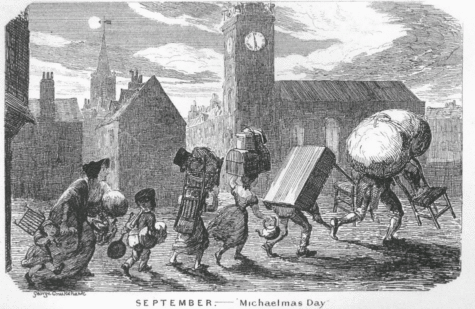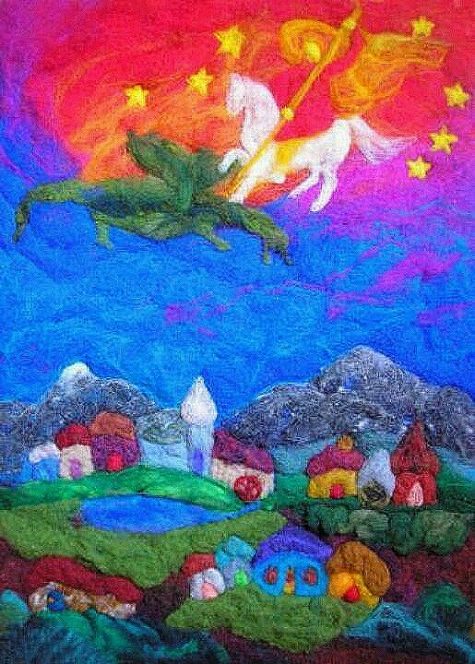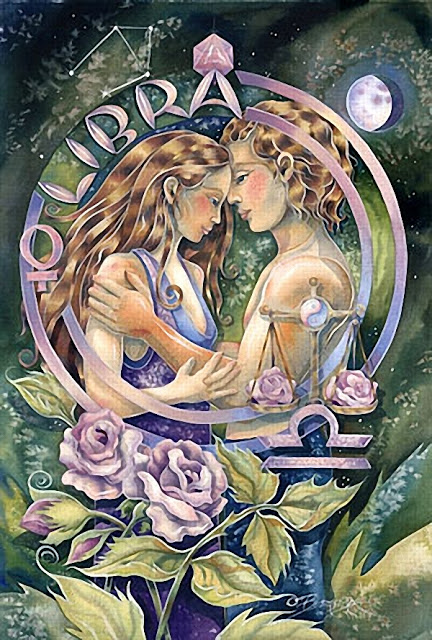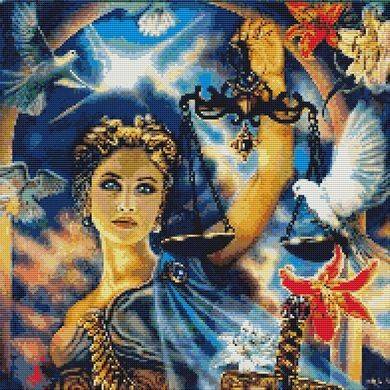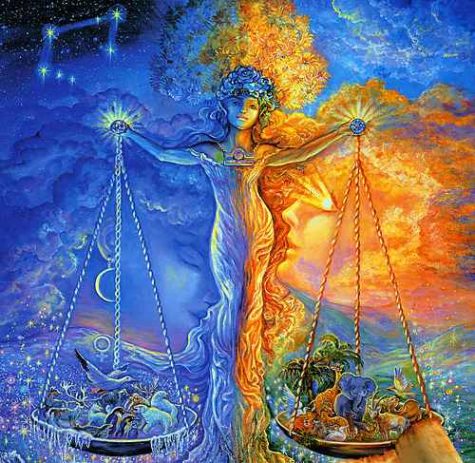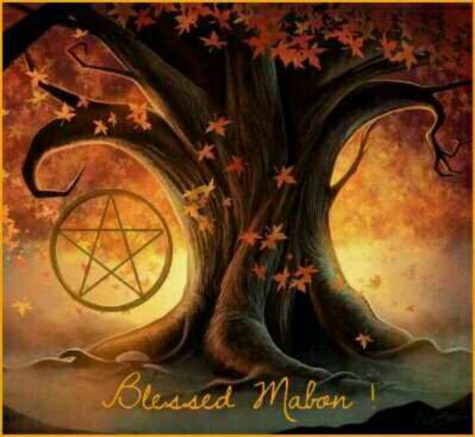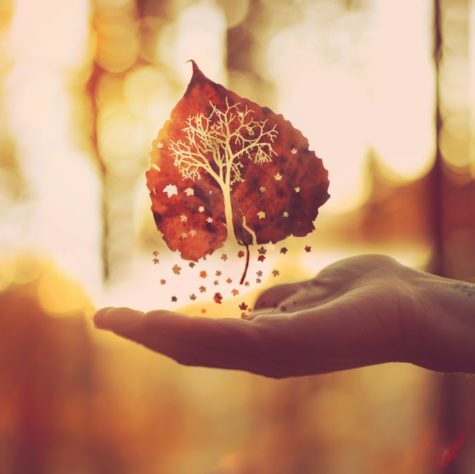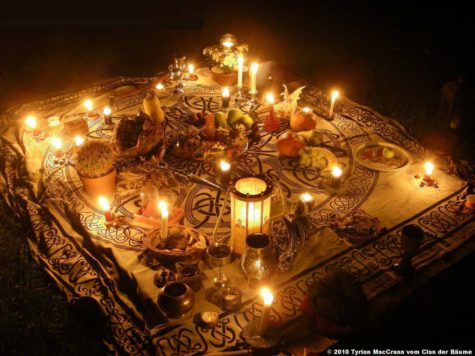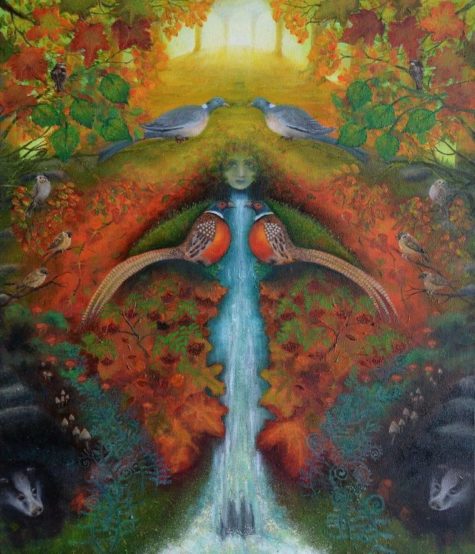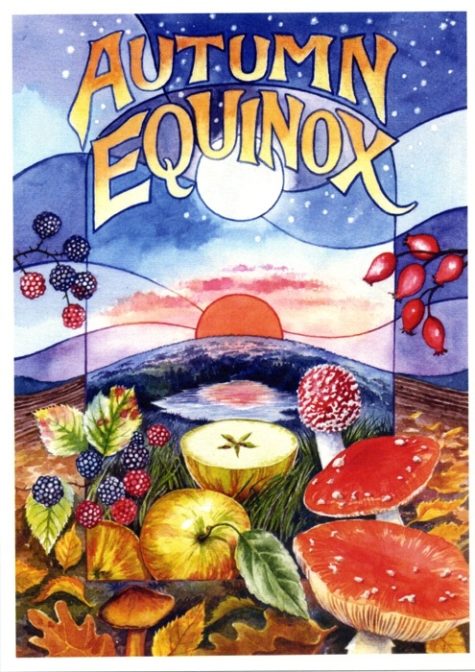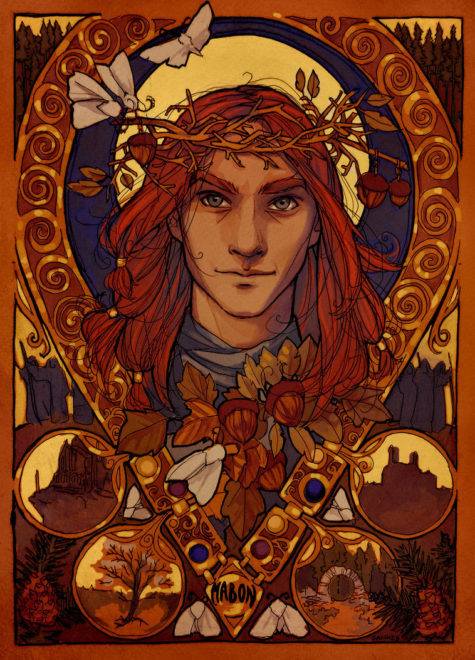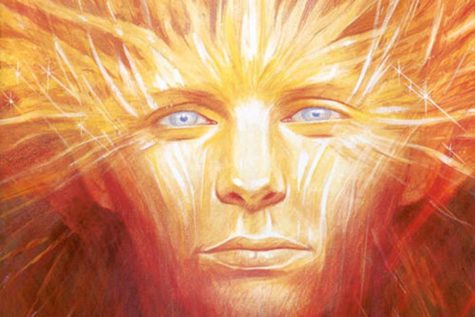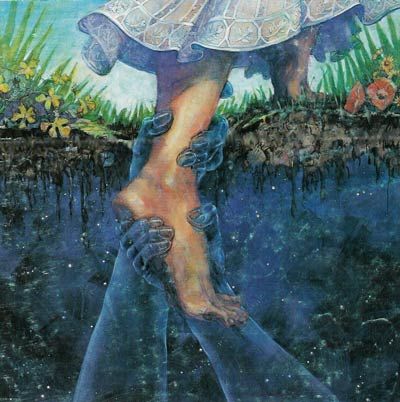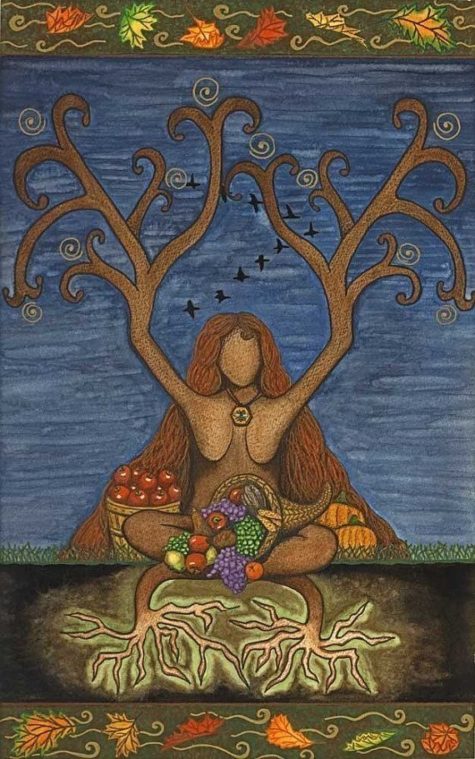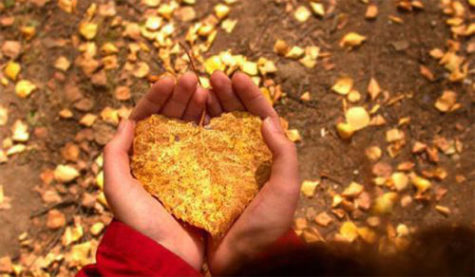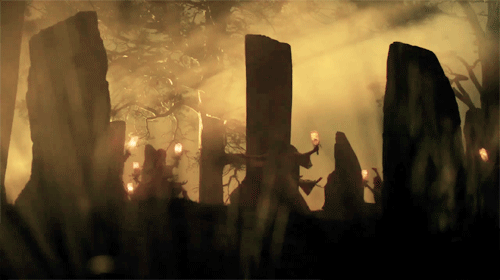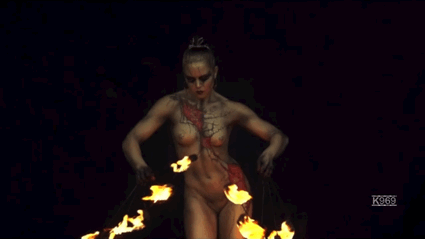September
Here is a traditional recipe for the Mid-Autumn Moon Cake
Filling:
- 1 can (17-1/2 ounces) lotus seed paste
- 1/4 cup finely chopped walnuts
Dough:
- 4 cups all-purpose flour
- 1/2-cup non-fat dried milk powder
- 3 teaspoons baking powder
- 1/2 teaspoon salt
- 3 eggs
- 1 cup sugar
- 1/2 cup solid shortening, melted and cooled
- 1 egg yolk , lightly beaten
- Mix lotus seed paste and walnuts together in a bowl; set aside.
Sift flour, milk powder, baking powder, and salt together into a bowl. In large bowl of electric mixer, beat eggs on medium speed until light and lemon colored. Add sugar; beat for 10 minutes or until mixture falls in a thick ribbon. Add melted shortening; mix lightly. With a spatula, fold in flour mixture. Turn dough out on a lightly floured board; knead for 1 minute or until smooth and satiny. Divide dough in half; roll each half into a log. Cut each log into 12 equal pieces.
To shape each moon cake, roll a piece of dough into a ball. Roll out on a lightly floured board to make a 4-inch circle about 1/8-inch thick. Place 1 tablespoon of lotus seed paste mixture in center of dough circle.
Fold in sides of dough to completely enclose filling; press edges to seal. Lightly flour inside of moon cake press with 2-1/2 inch diameter cups. Place moon cake, seam side up, in mold; flatten dough to conform to shape of mold. Bang one end of mold lightly on work surface to dislodge moon cake. Place cake on ungreased baking sheet. Repeat to shape remaining cakes. Brush tops with egg yolk.
Bake in a preheated 375 degree F. oven for 30 minutes or until golden brown. Transfer to a rack and let cool. Makes 2 dozen
Copyright Yan Can Cook, Inc. 1991.
- 1/4 cup sugar
- 2 egg yolks
- 1/2 cup salted butter
- 1 cup all-purpose flour
- 1 cup strawberry (or your favorite) jam
(traditionally red bean paste is used so if you want a more authentic version, you can use a can of red bean paste instead of the jam)
Directions:
- Preheat the oven to 375 degrees.
- Combine the butter, sugar and 1 egg yolk and stir.
- Mix in the flour.
- Form the dough into one large ball and wrap it in plastic wrap.
- Refrigerate dough for half an hour.
- Unwrap the chilled dough and form small balls in the palms of your hand.
- Make a hole with your thumb in the center of each mooncake and fill with about half a teaspoon of jam.
- Brush each cake with the other beaten egg yolk and place on a cookie sheet.
- Bake for about 20 minutes or just until the outside edges are slightly brown
Makes 24
Source: Unknown
The Mid-Autumn Festival, also known as the Moon Festival, is a popular East Asian celebration of abundance and togetherness, dating back over 3,000 years to China’s Zhou Dynasty. In Malaysia and Singapore, it is also sometimes referred to as the Lantern Festival or “Mooncake Festival.”
The Mid-Autumn Festival falls on the 15th day of the 8th lunar month of the Chinese calendar (usually around mid- or late-September in the Gregorian calendar), a date that parallels the Autumn Equinox of the solar calendar. The moon festival is celebrated on the full moon closest to the Autumn Equinox, which sometimes falls in October. This is the ideal time, when the moon is at its fullest and brightest, to celebrate the abundance of the summer’s harvest. The traditional food of this festival is the mooncake, of which there are many different varieties.
The Moon Festival is full of legendary stories. Legend says that Chang Er flew to the moon, where she has lived ever since. You might see her dancing on the moon during the Moon Festival. The Moon Festival is also an occasion for family reunions. When the full moon rises, families get together to watch the full moon, eat moon cakes, and sing moon poems. With the full moon, the legend, the family and the poems, you can’t help thinking that this is really a perfect world. That is why the Chinese are so fond of the Moon Festival.
The Moon Festival is also a romantic one. A perfect night for the festival is if it is a quiet night without a silk of cloud and with a little mild breeze from the sea. Lovers spend such a romatic night together tasting the delicious moon cake with some wine while watching the full moon. Even for a couple who can’t be together, they can still enjoy the night by watching the moon at the same time so it seems that they are together at that hour. A great number of poetry has been devoted to this romantic festival. Hope the Moon Festival will bring you happiness.
Farmers celebrate the end of the summer harvesting season on this date. Traditionally, on this day, Chinese family members and friends will gather to admire the bright mid-autumn harvest moon, and eat moon cakes and pomeloes together. Accompanying the celebration, there are additional cultural or regional customs, such as:
- Eating moon cakes outside under the moon
- Putting pomelo rinds on one’s head
- Carrying brightly lit lanterns
- Burning incense in reverence to deities including Chang’e
- Planting Mid-Autumn trees
- Collecting dandelion leaves and distributing them evenly among family members
- Lighting lanterns on towers
- Fire Dragon Dances
- Shops selling mooncakes, before the festival, often display pictures of Chang’e floating to the moon.
Stories behind the festival can be found at Widdershins:
The Moon Cake Uprising
In late Yuan Dynasty (1271 – 1368 AD), people in many parts of the country could not bear the cruel rule of the government and rose in revolt. Zhu Yuanzhang, founder of Ming Dynasty (1368 – 1644 AD), united the different resistance forces and wanted to organize an uprising. However, due to the narrow search by government, it was very difficult to pass messages.
The counselor Liu Bowen later though out the great idea of hiding notes with “uprise on the night of August 15th” in moon cakes and had them sent to different resistance forces. The uprising turned to be very successful and Zhu was so happy that he awarded his subjects with moon cakes on the following Mid-Autumn Festival. Since then, eating moon cakes has been a custom on Mid-Autumn Festival.
Sources: Wikipedia and Travel China Guide
September 29th is a medieval holiday which the Church Christianized under the label of “Michaelmas,” a feast in honor of the Archangel Michael. It is thought that the Roman Catholic Church at some point considered assigning the quarter dates to the four Archangels, since they had assigned the cross quarters to the four gospel-writers.
The feast day of St. Michael, the archangel and overcomer of the Devil, is a Christian celebration. Its main importance in people’s lives was that of a seasonal signpost in the year. In the British Isles, crops were harvested and the surplus sold by late September, so this became the time when farmers would pay their yearly rents to landowners.
Everyone ate goose at Michaelmas to bring prosperity, and many farmers included “a goose fit for the lord’s dinner” with their rent payments. Great market fairs occurred just before the feast day, and the large crowds these attracted made it convenient to hold elections at this time. Michaelmas is also a “Quarter Day.”
The ancient Celtic people divided the year into four major sections, or quarters, and then divided each of these in half to make an eight-part year that reflected the natural progression of the seasons. Foods traditional for Michaelmas include new wine; goose; cakes of oats, barley, and rye; and carrots. Some groups in the United States, such as the Pennsylvania Dutch, have kept Michaelmas, or “Harvest Home,” traditions alive.
During the Middle Ages, Michaelmas was celebrated as a Holy Day of Obligation, but this tradition was abolished in the 18th century. Lutheran Christians consider it a principal feast of Christ.
It was also one of the Welsh and Irish quarter days when accounts had to be settled. On manors, it was the day when a reeve was elected from the peasants. Traditional meal for the day includes goose (a “stubble-goose”, i.e. one prepared around harvest time) and a special cake called a St Michael’s bannock.
A Note About Dates:
There is evidence that Michaelmas was once celebrated later in the year, on the 10th or 11th of October, this is now referred to as ‘Old Michaelmas Day’. There may also have been a time when both dates for Michaelmas were acknowledged.
I like the legend of teenage girls collecting crab apples at the beginning of September, and arranging them in the initials of boys they fancied. If they could still discern the initials on Old Michaelmas Day, then then true love and romance would follow. The legend conjures two unrelated thoughts in my mind, firstly, would other girls mischievously re-arrange the apples to form the initials of a different boy. Secondly, what is the modern equivalent of this courtship ritual?
It’s interesting that certain customs transfer from one season to another. For example, two people snapping the the Michaelmas goose’s wishbone and thinking of a secret desire. Also, the concept of a Michaelmas Pie with ring, according to this legend, the lucky recipient will be engaged by Christmas and marry by Easter. Variations on these themes occur at Christmas and possibly at Thanksgiving.
Michaelmas Customs and Lore
According to an old legend, blackberries should not be picked after this date.
This is because, so folklore goes, Satan was banished from Heaven on this day, fell into a blackberry bush and cursed the brambles as he fell into them. In Yorkshire, it is said that the devil had spat on them. This old legend is well known in all parts of the United Kingdom, even as far north as the Orkney Islands. In Cornwall, a similar legend prevails, however, the saying goes that the devil urinated on them.
This is one Michaelmas custom that survives to this day, although sometimes it is said that you should not eat blackberries after the 29th of September. There is a very good reason for this custom, namely that by this time of year blackberries are tasteless and watery.
Other fruits, particularly nuts and rose-hips also have customs associated with Michaelmas. For example, ‘Hipping Day’ in Yorkshire, or Michaelmas pie in Ireland (Made of apples).
- Mop Fairs (Hiring Time):
Michaelmas was traditionally time when laborers and servants were hired. As the name suggests, maids would carry mops, but other trades carried the tools of their trades.
Thus the squires or the lord’s of the manor could tell what skills the prospective employees had, for example, a Shepherds his crook, and a gardener a rake.
- Fishing:
Michaelmas marks the end of the fishing season.
- Curfew:
The start of the curfew for winter night nights. The local church bell sounded each night from Michaelmas until lent. Curfew is derived from the French phrase ‘courve feu’, which means to cover, or to dowse a fire.
- Rent:
When tenants came to pay their quarter’s rent, they bring a fowl at Midsummer, a dish of fish in Lent, a capon at Christmas, and on Michaelmas Day, a goose.
- Trees:
This is traditionally a good time to plant trees as evidenced by this old saying, “A Tree planted at Michaelmas, will surely not go amiss.”
More Michaelmas Lore:
At Michaelmas time, or a little before,
Half an apple goes to the core;
At Christmas time, or a little after,
A crab in the hedge, and thanks to the rafter.
- If you eat goose on Michaelmas Day, you will not be short of money all year round.
- A Michaelmas rot comes ne’er in the pot.
- If St Michael brings many acorns, Christmas will cover the fields with snow.
- Michaelmas chickens and parsons’ daughters never come to good.
- Three things that never come to any good: Christmas pigs, Michaelmas fowls, and parsons’ daughters.
- So many days the moon is old on St Michael’s day, so many floods after.
- Harvest comes as long before Michaelmas as dog roses bloom before Midsummer.
- On Michaelmas Day the devil puts his foot on the blackberries.
- St Michael’s rain does not stay long in the sky.
- If it does not rain on St Michael’s and Gallus [Oct 16], a dry spring is indicated for the next year.
Collected from a variety of sources
Libra is the seventh sign of the zodiac. The sun enters Libra at slightly different times each year, usually around Sept 21, sometimes the day before or the day after.
- Symbol: Scales
- Element: Air
- Gemstone: Opal
- Keyword: I Balance
Librans are harmonious, noncompetitive, well balanced people. They tend to be indecisive. Consequently, although they enjoy talking, they dislike arguments and disagreements. Librans enjoy beauty and frequently become involved in creative pursuits. Librans are naturally intuitive.
From 365 Goddess, we have this for today:
- Themes: Balance; Justice; Peace
- Symbols: Scales; Balanced Items
- Presiding Goddess: Tula
About Tula:
This Hindu goddess is represented by the constellation Libra, her name even meaning “balance.” In all things, Tula teaches us how to harmonize the diverse nature of our hectic lives and reintegrate goddess-centered ideology within that framework.
To Do Today:
People born under the sign of Libra seem to integrate Tula’s characteristics of harmony and balance, especially in aesthetic sense. They cultivate relationships carefully and enjoy fighting for just causes. When those of us not born under this sign would like to do similarly, we can call on Tula for aid. Stand on the bathroom scale first thing in the morning and invoke her, saying:
Tula, instill in me a growing sense of harmony.
Between sound and silence let serenity dance;
between the shadow and the light, let peace prance.
where’er injustice dwells, let equity swell;
in my heart, in my life, bring an end to all strife.
Afterward, try to dress in balanced tones of clothing (like a white shirt and black pants) and spend the rest of the day monitoring your personal balance – your sense of equilibrium – maintaining your temper, pacing your steps, being aware of your center of gravity. In all these things, Tula’s equitable energy abides.
More About the Sun in Libra
The Sun is in Libra from approximately September 21 to October 20, depending on the year.
- Ruler: Venus
- Season: Fall
- Modality: Cardinal
- Metal: Copper
- Stone: Diamond, Quartz, Marble
- Color: Pastel Green
- Flowers: Marigold; Acanthus
- Anatomy: Kidneys
- Attributes: just, sociable, refined, accommodating, kind, fair, diplomatic, likable, indecisive, respectful, artistic
Libra natives are generally thought to be sociable, somewhat intellectual souls. They have an almost innocent way about them that makes them very approachable. Generally quite eager to cooperate, Librans spend a lot of their time trying not to rock the boat.
In theory, Libras are peace-loving. In practice, they can quietly stir up all sorts of trouble with their ways. Because Libra enjoys balance in their lives, they seek the middle ground. In the process, they may end up trying to be everything to everyone. This is where their reputation for untruthfulness comes from. Generally, their untruths spring from a true desire for peace and fairness–although they may not be comfortable with direct and malicious trickery, they feel totally justified when they lie in order to avoid making waves. Peace at any price! In this sense, they seem harmless. But, what can result is quite a ruckus! People involved with Libras may crib about their lack of directness and their apparent inability to take a stand. Librans are experts at avoiding being the one to blame. When confronted, they’ll (calmly and reasonably) say, “What, me? No, I just want peace.”
“On the fence”, “middle ground”, “middle road” — these are all expressions that we can safely associate with Libra.
Some more powerful signs may consider Libra a little on the weak side. This is all a matter of opinion, however! Without Libra, life simply wouldn’t be as fair.
Librans are known for comparing and thinking in relative terms, instead of in absolutes. This weekend is not just a good weekend, it’s better than last weekend. These people are always looking for the “best” way or the “right” way to live. Harmony is the ultimate goal, but their idealism and high expectations can mean plenty of discontent. Since life presents all of us with an extraordinary amount of choices, if Libra doesn’t learn to live in the moment at least some of the time, they’ll be in a constant state of unrest.
Society needs rules, and these rules attempt to bring justice, equality, and fairness. On an individual level, Libra represents these laws of civilization. Libra comes across as very civilized and rather refined.
Source: Cafe Astrology
Mabon (pronounced MAY-bun, MAY-bone, MAH-boon, or MAH-bawn) marks the Second Harvest, the end of the grain harvest (which begun at Lughnasadh), and rests on the Autumn Equinox. The Equinox mirrors dwindling of life (and eventual progression to rebirth), as well as the struggle for balance; day and night are equal for a single day.
- Celebrated with wine, apples, garlands, gourds and cornucopias.
- With decorations of orange, russet and maroon.
- Honoring the aging Gods and Harvest deities.
Various other names for this Lesser Wiccan Sabbat are The Second Harvest Festival, Wine Harvest, Feast of Avalon, Equinozio di Autunno (Strega), Alben Elfed (Caledonii), or Cornucopia.
Mabon is a celebration of life and death, and giving of life again, the cycle of the seasons. Mabon is a time to enjoy the fruits of a hard year’s labor, to stock up for the long winter. No matter how you celebrate Mabon, or how it came about, or whatever it’s true name may be, it is important to know that Mabon a time for giving thanks.
At the Autumn Equinox we all take a moment to pay our respects to the impending dark. We also give thanks to the waning sunlight, as we store our harvest of this year’s crops.
During this festival it is appropriate to wear all of your finery and dine and celebrate in a lavish setting. It is the drawing to and of family as we prepare for the winding down of the year at Samhain. It is a time to finish old business as we ready for a period of rest, relaxation, and reflection.
The pagans of antiquity didn’t have the ability to determine astrological positions as we do today. The European peasantry, therefore, celebrated this Sabbat on September 25th; actually, the Celts marked their days from sundown to sundown, so the Mabon celebration actually started on the sundown of our September 24th. Today, with the help of our technology, we can calculate the exact day of the Equinox; the date when the sun enters the sign of Libra, the Balanced Scales, which appropriately fits the Equinox.
The Druids call this celebration, Mea’n Fo’mhair, and honor the The Green Man, the God of the Forest, by offering libations to trees. Offerings of ciders, wines, herbs and fertilizer are appropriate at this time. Wiccans celebrate the aging Goddess as she passes from Mother to Crone, and her consort the God as he prepares for death and re-birth.
The Teutonic name, Winter Finding, spans a period of time from the Sabbat to Oct. 15th, Winter’s Night, which is the Norse New Year.
As a holiday, Mabon represents the time of honoring the dead, visiting burial sites, giving thankfulness for the end of the harvest season and the bounty it provides. These are the themes of closing, letting go and remembering. For the year, the harvest and for those who were lost to land of Avalon during the year.
Decorations and Activities for Mabon
Activities vary with region and tradition, as well as personal preference. Some ideas include making a Sun Wheel or wreath. Also, one could mirror the Celtic tradition of dressing a corn stalk in cloths and burning it in celebration of the harvest and upcoming rebirth.
Simple altar decorations can be obtained by taking a calm “pilgrimage” through your local woods and collecting leaves, acorns, berries, and other things symbolic of nature’s bounty. Some chose to sprinkle Autumn leaves around the house and on the sides of walk ways as decoration, though this may not be convenient if one lives in the city or doesn’t enjoy the cleanup. Alternately, the changing leaves can be dipped in paraffin and put on wax paper. After the leaves dry, they may be placed around the house or in large jars with sigils of protection and/or abundance carved lightly into them.
Additional seeds and grains can be set out as offering to our fellow creatures, and provide a healthy chance for birds to join in the celebrations as well. Symbolic designs can be made out of the sprinklings if one chooses. Those less fortunate should not be omitted from the celebration. Small, meaningless (to you) packages of food and drink gifted to a homeless person will make their day!
To honor the dead, it is traditional to place apples on burial cairns as symbolism of rebirth and gratitude. This represents the promise of the Great Spirits for renewed life (a new incarnation). Furthermore, it is a time to honor the elders, who have devoted so much time and energy to your growth and development. Something special is in order for these gracious people.
Going through your personal gardens with thanks and lovingly harvesting what is ready is also appropriate. Breads may be baked in the shape of the Sun, combining fruits or vegetables and grains, incorporating both of the major aspects of this Harvest. The seeds of various plants are stored through winter for replanting, and therefore, the plant’s rebirth in the Spring. A feast for friends and family always provides a cheerful abundance of energy and thanks.
Although many view the Harvest season as a celebration of life, it is also a celebration of death. The bounty you gather from your garden provides nourishment for you, family and friends. But it is also the death of those plants and vegetables which have been harvested from that garden. Thus Mabon is a celebration of the cycle of life.
This is a Celtic festival of thanksgiving, so what a better way to give thanks than to prepare a meal with the harvest of your garden. Those that indulge in wine can brew a new batch of this home made nectar of the Gods. Those that do not indulge, can brew preserves and jellies from grapes, raspberries and blackberries. Don’t forget an apple pie for dessert.
A main course can consist of meats, most often red meats. But this is just a suggestion. In this day and age of healthy eating, you should prepare a meal that fits your personal lifestyle. However, your side dishes should consist of late summer and early fall vegetables.
During your meal, share tales and happy stories about those you lost during the year. Or share your experiences and review the lessons you feel you have learned during this past season. Reflect on your deeds and actions and give thanks for the gifts you were given.
After your meal, share the chore of cleaning up. This is a way of showing honor and respect to your host and hostess. Think of it as a physical action to show that you understand the interconnection of all life and the desire to respect what you have been given and thanks for receiving those gifts.
During the evening hours you can continue the festival with a formal holiday ritual. There are as many ways and suggestions for conducting such a ceremony as there are people on this planet.
End your evening in private reflection. It is important for anyone practicing a spiritual life to reflect on his or her actions. Record your thoughts, your emotions and your experiences. This is the true value of your book of shadows. And there is no better time to take stock of yourself and your life than during a High Holy Day.
Ritual For Mabon
This Ritual is best performed during the early evening hours, just after Sunset, as this is the time of day which corresponds to the time of year. Sweep area, starting in the North and moving deosil (clockwise or sunwise direction), with your magickal broom to cleanse the Circle area and “sweep away” any lingering negative energies. Lay out the circumference of your Circle with cord, stones, etc., as necessary.
Set up the Quarter candles (North-Green, East-Yellow, South-Red, West-Blue) and/or other items symbolizing the elements at the Four Quarters (use a compass if not permanently marked out). Set up your altar as desired, and face it to the North, covering it with the red altar cloth.
Place all of the items listed below in their proper places upon it. For this ceremony, decorate the altar with the cornucopia filled with harvest items, and whatever else feels right. In addition to your usual tools and props, upon the altar should be:
- Red or Brown Altar Cloth
- Cornucopia filled with Fruits and Vegetables of the Harvest
- A Red Apple
- Bolline or another Sharp Knife (for cutting the Apple)
- Altar Pentacle or a Plate (to cut the apple on)
- A Bell
- A Second Wand decorated with Colored Ribbons (to use in the Demeter/Persephone portion of the ritual)
- A Wicker Basket (to carry the Decorated Wand in)
- Incense – Any of the following either alone or mixed together to make an Autumn Blend: Frankincense, Aloes Wood, Jasmine, Cinnamon, Musk, Cloves, Benzoin, Myrrh, and Sage
When all is set up, take a shower or bath for purification and don your ritual robe or other ritual attire. Be sure to wear your magickal jewelry. Sit quietly and meditate for a little while – to ground and center before beginning the Ritual. When you feel ready to begin, play some quiet peaceful music for the ritual.
Cast a circle in whatever way is familiar to you. After the Circle is cast, begin the Mabon sabbath Ceremony by sitting quietly for a few moments, then say these words aloud in dedication:
“Lady Autumn, Queen of the Harvest,
I have seen You in the setting Sun,
with Your long auburn tresses
blowing in the cool air that surrounds You.
Your crown of golden leaves is jeweled
with amber, amethyst, and rubies.
Your long, flowing purple robe
stretches across the horizon.
In Your hands You hold the ripened fruits.
At Your feet the squirrels gather acorns.
Black crows perch on Your outstretched arms.
All around You the leaves are falling.
You sit upon Your throne and watch the dying fires
of the setting Sun shine forth its final colors in the sky.
The purple and orange lingers and glows
like burning embers.
Then all colors fade into the twilight.
Lady Autumn, You are here at last.
I thank You for Your rewards.
I have worked hard for these gifts.
Lady Autumn, now grant me peace and rest.”
Sit quietly again and reflect on the meaning of the Autumn Season for a little while.
When you are ready, pick up your wand and hold it in your power hand, face the North and with your arms outstretched (kneel or stand) and say:
“The Wheel of the Year turns on and on,
bringing us all to and from each Season,
and from and to another.
What will be is. What was will be.
All time is here and now in this Sacred Space.
I now pause to watch the Wheel turn
and cast this Circle on this blessed eve
to celebrate the Season of Mabon, the Autumnal Equinox –
the time of the Second Harvest.
In this moment between time,
I come to praise the bountiful aging Goddess
and Her consort, the God of the Harvest.
I wish to give thanks and feel myself
as a part of the relentlessly turning
wheel of life, death, and rebirth.
O Great God of Wine and the Harvest,
who has been known as Mabon, Dionysus, Bacchus, and Thor –
Grant me strength and understanding
throughout this season and always.
O Great Goddess of the Harvest and the Underworld,
who has been known as Demeter, Persephone, Modron, and Morgan –
Teach me the secrets of the Mysteries and the ways of magic.”
Place your wand back in its place on the altar.
Spread your hands out over the Harvest Altar and say these words:
“The time of change is upon us again –
the Equinox comes, the Wheel turns…
The Goddess and the God prepare for
Their journey to the Otherworld,
as the Earth and all of Her children
prepare for the time of quiet and
reflection that lies ahead…
May I use this Autumnal period to
seek for the strength and power within
to assist me on my own quest for
vision, feeling, and peace…
May I see and feel the presence of
the Goddess and the God within,
though without,
the Earth begins Her slumber…
Keep me in Your light…”
Lower your arms and sit quietly meditating again for a while.
When you are ready, stand at your altar facing the North and raise your arms in greeting. Say:
“Between the worlds I build this sacred altar.
Outside of time, this rite leads to the ancient way.
Where I may find Demeter of high Olympus
And conjure magic great. Be here, I say.”
Place the decorated wand in the wicker basket and carry it to the North. Say:
“Persephone returns to the Underworld.
Weep not, Earth Mother,
For the Divine Child of love is here.”
Carry the basket to the East; say:
“Persephone returns to the Underworld.
Although the Light is fading,
It shall return to the Earth.”
Take the basket to the South; say:
“Persephone returns to the Underworld.
The cold of winter comes,
But only for a short time.”
Finish by carrying the basket to the West; say:
“Persephone returns to the Underworld.
The Earth shall lie in slumber
Until the Light of this Divine Child
Once more grows in strength and shines full upon us.”
Place the basket on the floor before the altar. Ring the bell three times.
Take your bolline in your power hand and the apple in the other. Say:
“Reveal to me your hidden secrets
That I may come to understand your sacred Mysteries.”
Set the apple on the altar pentacle (or plate) and cut it crosswise (with the bolline) to reveal the pentagram in the core. Contemplate this hidden sacred symbol for several moments. Then say:
“In life is death, in death life.
All must follow the sacred dance into the cauldron,
Time after time, to die and be reborn.
Help me to remember that
Every beginning has an ending
And that every ending has a new beginning.”
Take a bite of the apple.
What is left put outside later to share with the birds.
Say:
“Holy Mother, Demeter,
Comfort and protect me in my times of tribulation.
Instruct me into the Mysteries.
You, with your daughter Persephone, have the power
To lead me to new understanding.”
Now is the time for meditation and any spellworkings you may need or desire to end your sabbath celebration. Appropriate Spellwork for Mabon include those for protection, wealth and prosperity, security and spells to bring a feeling of self-confidence. If no spellwork is to be done at this time, then proceed with the Cakes and Ale Ceremony – or whatever is your practice, followed by Releasing the Magic Circle.
Please note this ritual is based on the Northern Hemisphere correspondences of elements and their colors, and directions and so on.
Mabon History
Mabon (May-bawn) is also known as the Feast of Avalon and the festival of the Wine Harvest. To the Celts, Avalon is the mysterious place for the land of the dead. and literally means the “land of apples”. Thus this is a holiday for celebrating the bounty of the harvest and the desire for the living to be reunited with their deceased loved ones.
But the holiday is also named for the Welsh God Mabon. Mabon means the “great son”. He was the son of Modred, kidnapped at the age of 3 and later rescued by King Arthur. His life represents the innocence of youth, the strength of survival and the growing wisdom of the elderly. Perhaps it is this view of the cycle of life that brings Mabon to his most popular role, the King of the Otherworld and the God of Darkness.
His myths overlap with other Gods such as the Welsh God Gwyn Ap Nuad, which means “white son of darkness”. He is seen as the God of war and death, the patron God of fallen warriors. Once again this is a representation or connection to the Land of Avalon.
Sources:
Autumn Equinox refers to a time of the year when day and night are equally balanced. The dates vary slightly, falling between Sept 21 and Sept 23. The sun is in the process of crossing the equator and in astrological terms is entering the sign of Libra.
The sun is the focal point of energy (along with the moon) and such; its life force pushes us to discover more about ourselves. This movement into the Libra puts a congenial, cooperative outlook on that time of year, just what was needed by the communities, as they all worked together to complete the harvest.
Other names for the Autumnal Equinox include:
- Alban Elfed
- Cornucopia
- Equinozio di Autunno
- Fall Equinox
- Feast of Avalon
- Festival of Dionysus
- Festival of Strong Will
- Harvest Home
- Second Harvest Festival
- Wine Harvest
- Winter Finding
Harvest Home is an Anglo-Celtic version of the original Mabon, and fell in-between the First (Lugnasadh) and the Third (Samhain) Harvests. Harvests festivals were a very important part of the pre- industrialized culture. It was a time of relief and of rest. Relief that the crops were in and rest to catch their breath before the work of preparing for winter began. This was a time to give thanks.
- Color of the day: Yellow
- Incense of the day: Coriander
Once again the Sun’s path crosses the celestial equator, and the day and the night are now again of equal length. On the Gregorian calendar this is the first day of autumn, but on the modern Celtic calendar it is midautumn.
Autumn Equinox in Welsh Mythology
This holiday is more commonly known by its Welsh name Mabon. Mabon means “divine youth.” It is the name of a mythic hunter hero whose story is told at this time of year. At the beginning of time, Mabon was born to the mother goddess Modron. That we only know his mother and not his father attests to the matriarchal lineage of the early Celts.
The equinox marks the time when Mabon was three nights old and stolen from his crib. For the next three months, the heroes Cai and Bedwyr will search for him and ask all manner of birds and beasts for help. But, according to legend, it is only the salmon who can give them direction. On Yule, the heroes retrieve the divine child by freeing him from a prison in Gloucester.
Like Apollo, Mabon is a hunter with a bow and a musician with a harp. He is a Sun god. Mabon represents the Sun that is waning in strength during this quarter of the year and that will begin to return only after the solstice. The waning of the light is frightening and depressing, and it is necessary for our own sake to use magic at this time to help in the quest for Mabon.
The strongest act of magic that one can do at this time is to participate in the celebrations of the yearly cycle. As one integrates the yearly cycle deep into one’s unconscious, serenity and confidence are gained. This is the peace that comes from knowing and accepting that the light will return when it is time.
Autumn Equinox in Celtic Mythology
In this variation of the legend of the Autumn Equinox, this is the day of the year when the god of light, Lugh, is defeated by the god of darkness, Lugh’s twin and alter-ego, Tanist. The night conquers day.
The tales state that the Equinox is the only day which Lugh is vulnerable and the possibility of his defeat exists. Lugh stands on the balance (Autumn Equinox-Libra) with one foot on the goat (Winter Solstice-Capricorn) and the other on the cauldron (Summer Solstice-Cancer). He is betrayed by Blodeuwedd, the Virgin (Virgo) and transformed into an Eagle (Scorpio).
Two events occur rapidly with Lugh’s defeat. Tanist, having beaten Lugh, now takes over Lugh’s place both as King of our world and lover to the Goddess Tailltiu. Although Tanist now sits on Lugh’s throne, his official induction does not take place for another six weeks at Samhain, the beginning of Winter, when he becomes the Dark King, the Winter Lord, the Lord of Misrule. He mates with Tailltiu, who conceives, and will give birth nine months later (at the Summer Solstice) to her son, another incarnation of Tanist himself, the Dark Child.
Lugh’s sacrifice represents not only the sun’s dying power, but also the cycle of rebirth, his energy remaining within the corn we have since harvested. A incarnate (of Lugh) corn spirit was thought to specifically reside within the last stalk (or stock), which was traditionally dressed in fine clothes and decorations, or woven into a wicker man-shaped form. This symbolic decoration was then harvested and carried from the field to be burned with rejoicing for the spirits release and Lugh’s upcoming rebirth.
The Autumn Equinox in Greek Mythology
In Greek mythology, Autumn begins as Persephone returns to the Underworld to live with Hades, her husband.
In short, the myth says that Demeter’s daughter, Kore, had taken a day to pick flowers in a meadow when the Earth opened up, and Hades pulled the girl into the Underworld to become his bride. Kore’s name became Persephone when she married Hades.
For nine straight days, Demeter searched for Kore, with no success. In misery and despiration, Demeter questioned Helios, the Sun God, who informed her that her brother, Zeus, had given the girl to Hades. Furious, Demeter left Olympus to roam the Earth disguised as an old woman, ending up settled in her temple at Eleusis.
Soon after, she cursed the Earth so it would yield no crops. Zues sent her a frantic message inquiring as to why she had prevented growth on the planet. She replied that there would be no regeneration of vegetation on the Earth until her daughter, Kore, was safely returned.
Zeus immediately dispatched Hermes into the Underworld to retrieve the girl. Hades, not wanting to relinquish his bride permanently, convinced Persephone to eat some pomegranate seeds before she returned to her mother, Demeter. Demeter was yet again distraught when she learned of this trickery! Finally, Zeus declared that Kore-Persephone would live with her mother during one half of the year and return to her husband, Hades, during the other half. In thanks, Demeter lifted the curse on the Earth, creating Spring. Every year hence, during her time of greatest sorrow, Demeter renews the curse, as her daughter returns to Hades and the Underworld.
Sources:
- Ravenna’s Wheel of the Year
- Widdershins
- Gordon Ireland
- Llewellyn’s Spell A Day
The Autumnal Equinox festival is known in some traditions as Cuivanya or the Feast of Divine Life. This particular version of this celebration of the Autumnal Equinox is a holy day in the Filanic tradition.
- What is Filanism?
Filianism (the “Daughter Tradition” – from filia,daughter) is a religion that is sometimes considered to have started, or taken its current specific form, in the 1970s, since that is when it first became publicly known. Its first recorded modern appearances were in Britain, although some have postulated a Greek or Asian origin for its Scriptures and philosophy.
It is one of the four Cardinal Feasts of the year, and stands at the center of both the Mysteries of Life Cycle and the Mother Half of the year. It falls on the 17th of Abolan the apple-month (21st September) – approximately at the autumnal equinox.
The element governing the Fall season is Earth, and the festival itself is often considered to be the Harvest Festival.
While the association of the Mother God with the element of earth (the Earth Mother) has its roots in patriarchal “demotion” of the divine feminine to the lesser elements – attempting to make Her earthly and lunar as opposed to Solar and Spiritual – it must be remembered that in the beginning, the Mother Goddess was rightly understood to rule all elements of creation. Thus the patriarchal error lies not in seeing the Goddess as Earth Mother, but in seeing her only as Earth Mother and not also as Sky Mother, Solar Mother, and Queen of Heaven.
The idea of a Harvest Festival is often seen as “primitive” people, dependent on agriculture, giving thanks for their material survival and for the harvest that will permit them to eat. They then (according to “scientific” thinking) invent “gods” as a sort of imaginary explanation of the physical realities of life.
In fact the reverse is true. Our ancestors lived far closer to the Spirit than we do. Everything they did was spiritual first and physical second. The transition to agriculture was fundamentally a spiritual phenomenon. It was a part of the increasing materialization of maid: her becoming more and more a creature living on the physical plane.
But this in itself was spiritual: part of the process of cosmic manifestation. The rituals of agriculture were rituals first and practicalities second. They represented a new spiritual orientation for earthly life which remains with us to this day.
The central symbol of the autumnal equinox Harvest Festival, is the scythe or sickle. This is a symbol that represents both life and death. It symbolizes the harvest and the abundance of the earth, the coming to fruition of all the good things that have been planted and tended, both materially and spiritually. At the same time it represents cutting-down and death. The death of the individual, and ultimately the death of the cosmos itself, when all creation is in-breathed back into Absolute Deity, the Dark Mother who out-breathed the cosmos in the beginning.
Indeed, the Feast of Divine Life, while it is devoted to the entire Trinity of Mother, Daughter, and Dark Mother may also be called the true Feast of the Dark Mother (and indeed the festival marks the beginning of the dark half of the year).
The Dark Mother, or Absolute Deity (nirguna brahman – God Beyond Form) is called “Dark” because we can know nothing of Her. As the Vedantins put it, we can only assert of Absolute Deity: neti, neti “not this, nor this”. Yet while She appears Dark to us, the Dark Mother is hailed as “Dark beyond the Light and Light beyond the Darkness”. At Her darkest (from the worldly point of view) she is the “grim” Reaper, reaping not only the human soul at the end of a single life, but the entire creation at the end of all worlds.
But reaping has a double significance. In one sense it is “death” but in another sense it is harvesting, the coming to fullness and consummation of life. And it is this fullness and richness of Divine Life that is the primary theme of the great festival of the autumnal equinox.
The Dark Mother is likened to “Earth” in its most metaphysical sense, as the Ground of All Being. As it says in the Scriptures: “Let her not trust the ground her feet are set on, and doubt the Ground upon which that ground stands.”
From the human, or worldly, perspective, the Dark Mother is the third person of the Trinity but from the spiritual perspective, She is the first, the very foundation of the Trinity itself. That is why the Festival of the Trinity is also the Festival of the Dark Mother, because, in focusing on the whole Trinity, and not just Mother/Daughter with the Dark Mother in the background, we have to see the Dark Mother as the “First Principle and the Final Cause” not only of the cosmos, but of the Trinity Itself.
The Dark Mother is the Ground from which all being proceeds, and the sickle that harvests it when its cycle is complete. She is “the Beginning and the End”. While the first feast of the Mysteries of life cycle, the golden Festival of Regeneration (Chelanya), celebrates renewed life, and the last, the Feast of the Dead (Tamala), celebrates death, the central autumnal equinox festival of Cuivanya celebrates life and death at once in the sacred mystery of the Harvest – the “death” that comes as the culmination and fulfillment of Life. The death to this world that is birth to a higher world.
And yet, of course, it is not death but life that is the primary focus of this autumnal equinox festival, and not simply life in the ordinary sense, but the fundamental connection of all life with the Divine, and as such, it is necessarily also the feast of the Holy Trinity, since the Divine Life that creates the universe is inherently threefold.
The Trinity of Our Mother God (sometimes called the “Triple Goddess”) is often compared to the Hindu Trimurti – Creatrix (Mother), Preserver (Daughter), and Destroyer (Dark Mother) of the worlds (or with their lesser reflection, the Three Fates, spinner, weaver, and cutter of the world-thread). But while it is true that the Dark Mother, or Absolute Deity, in-breathes all life and all being at the end of time, it is equally true that She out-breathes it at the dawn of time. She is both the first Sower and the final Reaper of all life and all creation. From Her proceeds the bright Solar Mother who creates the worlds, and from the Solar Mother proceeds the Lunar Daughter who maintains them in being for the whole of their existence.
Nothing exists outside the Divine, and all things are part of the Divine Life. While modern people tend to see much of the universe as “inanimate” or “lifeless”, our tradition teaches us that all things are infused with the Divine Life. The universe is ensouled – not in the same way that we are, but everything that is is infused with the Divine Intelligence. That is why, for example, the movements of the stars and planets are connected with the events of human life – not because one directly affects the other, but because both are part of what has traditionally been called the anima mundi, or world-soul, (but which, for the sake of disambiguation, we might prefer to term the cosmic soul).
Divine Life is present throughout the cosmos, not just in human, animal, or vegetative life, but in all creation, and this autumnal equinox festival traditionally expresses that through the agricultural symbolism of the harvest, which is not simply a “metaphor” but a ritual in the fullest and deepest sense of the world, reaching back into the times when all human activities were spiritual rites first and worldly activities only secondarily.
The very biological, chemical, cultural, and psychological factors that make agriculture both possible and necessary are bound up intimately with the living symbolism of the cosmos and our earthly microcosm thereof.
The truth is the exact reverse of the “modernist” or “evolutionist” notion that physical facts come first and metaphysical Truth is secondary. In reality, all things are spiritual first and physical only secondarily and reflectively.
Which is simply another way of saying that Our Mother God is the Ground of All Being, and that every aspect of the cosmic whole is simply an expression of the Divine Life that underlies it.
That is the fundamental Truth of the Feast of Divine Life, the great festival of the autumnal equinox. It is a celebration of the Divine that is present in all things and manifested to us in the wonderful golden abundance of the harvest, the yearly culmination of our dear Mother’s nurturing love for Her children.
Ideas for Celebrating the Feast of Divine Life
- Prepare a feast!
Traditional foods include apples, cider, and seed cake. Fruits and vegetables that have ripened at this time of year are also appropriate. Don’t forget to thank the Goddess for the food on your table and all the many blessings She has given you!
- Decorate your shrine
Decorate your shrine with the fruits of the season, especially apples, as they represent the golden apples of Avala! A brief summary of he symbolic significance of the apple and Avala is given below:
Avala is the Earthly Paradise, for although beyond this physical world, it is still below the level of pure Spirit as the resting place for spiritually awakened but still imperfect souls. The Tree of Life, at its centre, bears the golden apples of life eternal. The word “paradise” comes from a root-word meaning “orchard”. Avala and Elysium both mean “apple-land”. In many traditions, from the Sumerian and Greek to the Aztec, this paradise has been pictured as a mountain-top orchard which, in all earlier and most later accounts, belongs to a “goddess”. Thus the Sacred Mountain is Her mountain; the golden apples Her apples, for Hers is the gift of eternal life.
- Perform a Rite of Sacrifice
This can be an elaborate ritual, or a simple offering of food and wine. The basic prerequisite is that what is sacrificed to the Goddess must be something of value. It can also include a sacrifice of time and energy. For example: you could offer up Saturday mornings to volunteer to help feed the homeless, or time and energy to work in a community garden.
- Pray the Filianic Rosary
The purpose of these is to allow a Catholic-style rosary to be prayed by individuals and groups who worship the Mother God in Her Trinitarian form, as God the Mother, God the Daughter, and the “Dark” Mother who is Absolute Deity, beyond being and unbeing; as set out in The Filianic Creed.
Here’s a nice example of a Hail Mary:
Hail Mary, fount of Grace
Lady of earth and Heaven
Blessed art Thou by all maidens
And blessed is Thy most beloved daughter,
Holy Mary, Mother and God,
Shelter us fallen ones now and at the hour of hour death.
- Read passages from the Filianic Scriptures.
The scripture passage for the Feast of Divine Life is found in The Crystal Tablet, Verses 12-29, as given below from the Lux Madrian version:
12. Life is the life of the spirit-the first principle; beyond being and unbeing. Life was before existence. Life is the cause of existence.
13. How shall the soul live in Life?
14. Let her realise the truth of herself and the Truth of the Absolute. Let her know that her life is beyond even her existence, that the Absolute Life, the Life of the Goddess, is beyond all existence.
15. Let her not be held from herself or her Goddess by anything that exists, for all the things that are have come from nothing and to nothing shall return. But the Divine Life, and her life within it, Was ever and ever shall Be, though time itself shall only last a space.
16. Let her not trust the ground her feet are set upon and doubt the Ground upon which that ground stands. Rather, let her doubt the sea, the sky, the fingers of her hand, and the breath of her mouth; for all these things may be illusions, as in some sense they are.
17. But let her know Life Divine as the Truth beyond truth and the Faith beyond faith and doubt.
18. Life is pure force, or energy, or delight. It is the joy of the Goddess, and Her breath and Spirit.
19. Light is the outpouring of Life into existence. All things that exist come from Life; they are made and sustained by Light.
20. Though an existing thing appear never so solid, yet its body is made of light. All material things are but consolidated force; and the vibration of force is the whole of their being.
21. Yet material things are far from the Source of Light. They have become subject to consolidation and restriction.
22. Pure light knows no bounds, but is perfect joy, and breathes its own perfection.
23. How shall the soul approach to Light?
24. Let her make her every act a resplendent creation, and let every outpouring of her energy be a well-made gift for her Lady. Let her not fall into dullness, but be ever creating herself anew in the delight of her energy.
25. Let her not seek for reward, but only for her own perfection; thus shall the action itself become perfect. Let her turn from the transient and find delight in the Eternal.
26. For every earthly action is the shadow of some higher form; and the soul must choose whether in her act she shall approach that form, or sink from it into deeper shadows and the morass of illusion.
27. She who rejects the light of the Spirit in this world shall, beyond death, be plunged into darkness and the confusion of bodiless echoes.
28. But every act that is performed in dedication to the Mother is an expression of the soul’s true self, and loosens the chains of her bondage.
29. If the soul live in Light, no thing shall be impossible to her, for her will shall become one with the will of our Lady.
Sources:
Formerly called “I am an American Day” (1940) and then “Citizenship Day” (1952), this observance’s long new name (2004) is called Constitution Day for short. Celebrated on Sept 17 , it marks the anniversary of the date in 1787 when the final draft of the Constitution of the United States was signed by delegates to the Constitutional Convention after months of wrangling.
The framers of the Constitution had been arguing constantly as they met in secret, but they had leaked reports to the press indicating that all was well. “So great is the unanimity, we hear, that prevails in the convention, upon all great federal subjects, that it has been proposed to call the room in which they assemble ‘Unanimity Hall.'” The Federalists (as they came to be called) argued through June and most of July and reached an agreement on July 16.
After deciding to leave out a bill of rights — because everyone was worn-out and they thought there was no need for such a list — the framers completed the final draft on September 17 and made it ready for submission to the states for ratification.
The American Bar Association and other organizations make an effort to mark this anniversary by sponsoring symposia and, in some cases, offering free legal advice.
From: Almanac.com
By presidential proclamation, Patriot Day is observed in the United States on September 11, or 9/11, in memory of the thousands who lost their lives as a result of the September 11, 2001, terrorist attacks against the United States that involved four hijacked planes. The observance also honors those who came to aid in the aftermath.
Each year on Patriot Day, the U.S. flag is flown at half-staff. Citizens are asked to observe a moment of silence, usually at 8:46 a.m. EDT (when the first hijacked plane struck the World Trade Center in New York City), and are encouraged to devote the day and year to serving their neighbors and communities.
From: Almanac.com
